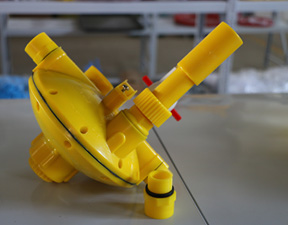Fish Feed Blending Equipment for Optimal Aquaculture Production Efficiency
Nov . 24, 2024 19:36 Back to list
Fish Feed Blending Equipment for Optimal Aquaculture Production Efficiency
The Importance of Fish Feed Mixer Machines in Aquaculture
In recent years, the aquaculture industry has experienced remarkable growth, driven primarily by the increasing global demand for fish and seafood products. As the industry expands, so does the necessity for efficient and effective feeding systems to ensure optimal fish health and growth. One vital piece of equipment that has emerged in this context is the fish feed mixer machine. This article will explore the significance of fish feed mixer machines, their functionality, and the advantages they offer in aquaculture operations.
Understanding Fish Feed Mixer Machines
A fish feed mixer machine is designed to blend various ingredients into a homogeneous feed mixture tailored specifically for fish. These machines are crucial in producing high-quality fish feed that meets the nutritional requirements of different species. The mixer combines fish meal, grains, vitamins, and supplements to create feed that promotes growth, enhances health, and improves feed conversion ratios.
Typically, fish feed mixers can be classified into several types based on their design and function, including horizontal mixers, vertical mixers, and paddle mixers. Each type has its unique features and benefits, but all share the common goal of ensuring a consistent and thorough mixture of feed ingredients.
Functionality and Design
Fish feed mixer machines operate through various mechanisms, depending on the design. For instance, horizontal mixers utilize rotating blades to mix ingredients as they move through a chamber, while vertical mixers typically incorporate augers or paddles that facilitate movement from the bottom to the top of the mixing chamber. The choice of mixer often depends on the specific production needs, desired feed consistency, and the scale of operation.
Most modern machines come equipped with advanced features, such as programmable logic controllers (PLCs) that allow operators to set precise mixing times and speeds. This level of control is essential for achieving the desired mixture quality and can significantly impact the overall efficiency of the operation.
fish feed mixer machine

Advantages of Fish Feed Mixer Machines
1. Customization of Feed Formulations One of the primary benefits of using a fish feed mixer machine is the ability to customize feed formulations based on specific species requirements and growth stages. This customization helps optimize fish health and growth rates.
2. Improved Feed Quality A well-mixed feed is crucial for ensuring that fish receive a consistent and balanced nutritional profile. Unevenly mixed feed can lead to nutritional deficiencies, impacting fish growth and health. Fish feed mixer machines eliminate this risk, offering a homogeneous blend of nutrients.
3. Cost Efficiency By allowing aquaculture producers to create their own feed formulations, fish feed mixer machines can lead to significant cost savings. Purchasing raw ingredients is typically cheaper than buying pre-packaged feed, and producers can optimize their formulations to minimize waste.
4. Scalability Fish feed mixer machines come in various capacities, making them suitable for both small-scale operations and large commercial farms. This scalability allows operators to expand their production without needing to overhaul their processing equipment.
5. Time Efficiency Automated mixing processes significantly reduce the time required for feed preparation compared to manual mixing. This efficiency enables fish farms to dedicate more time to other essential areas such as growth monitoring and system maintenance.
6. Enhanced Feeding Practices Using a mixer enables better integration of additives and medications into the feed, which can be crucial for managing fish health, especially in intensive farming systems.
In conclusion, fish feed mixer machines play a vital role in modern aquaculture by enhancing feed quality, improving operational efficiency, and allowing for customized feed formulations. As the industry continues to grow and evolve, the significance of these machines will likely increase, paving the way for more sustainable and economically viable aquaculture practices. By investing in fish feed mixer technology, aquaculture producers can ensure they meet the rising global demand for fish while promoting responsible and effective farming methods.
-
Hot Sale 24 & 18 Door Rabbit Cages - Premium Breeding Solutions
NewsJul.25,2025
-
Automatic Feeding Line System Pan Feeder Nipple Drinker - Anping County Yize Metal Products Co., Ltd.
NewsJul.21,2025
-
Automatic Feeding Line System Pan Feeder Nipple Drinker - Anping County Yize Metal Products Co., Ltd.
NewsJul.21,2025
-
Automatic Feeding Line System - Anping Yize | Precision & Nipple
NewsJul.21,2025
-
Automatic Feeding Line System - Anping Yize | Precision & Nipple
NewsJul.21,2025
-
Automatic Feeding Line System-Anping County Yize Metal Products Co., Ltd.|Efficient Feed Distribution&Customized Animal Farming Solutions
NewsJul.21,2025






